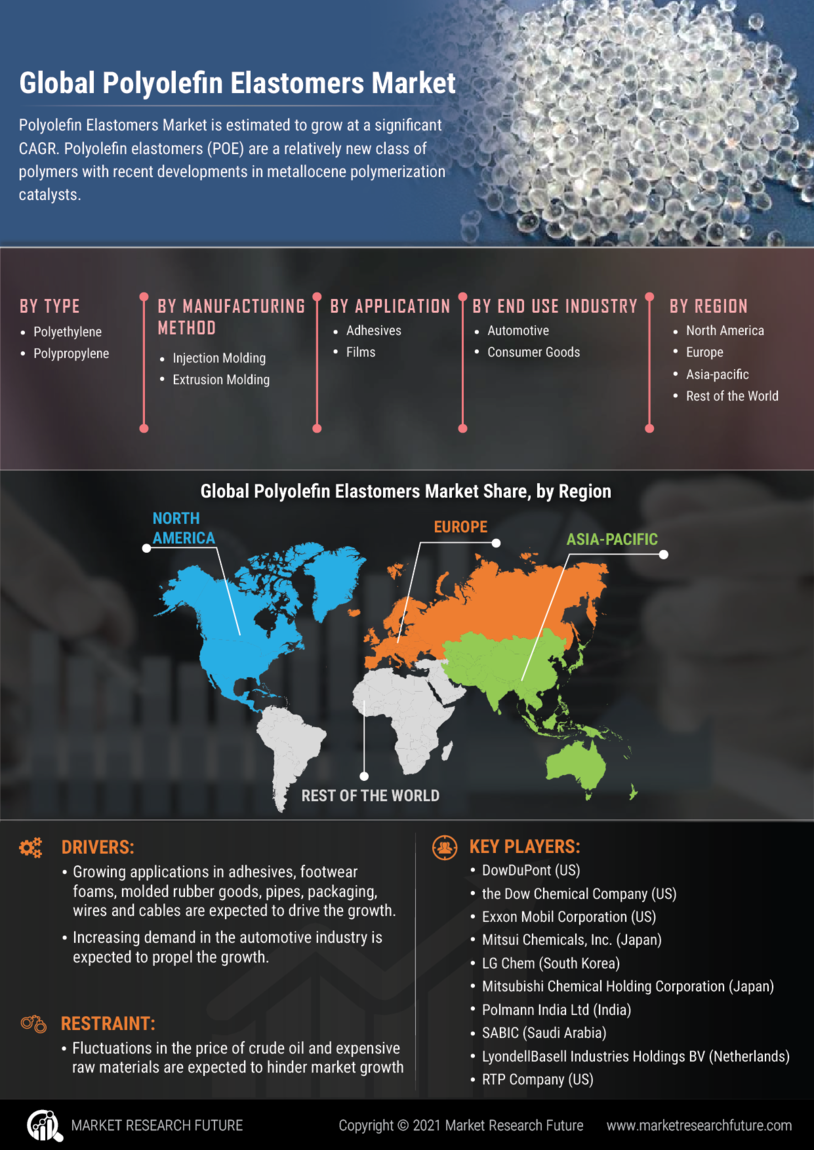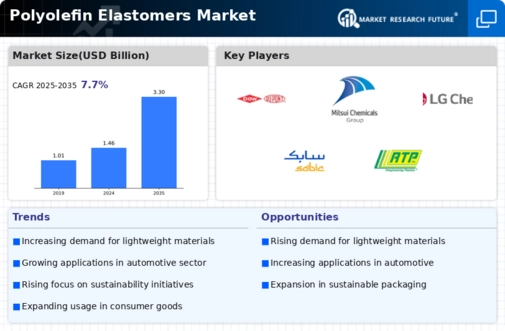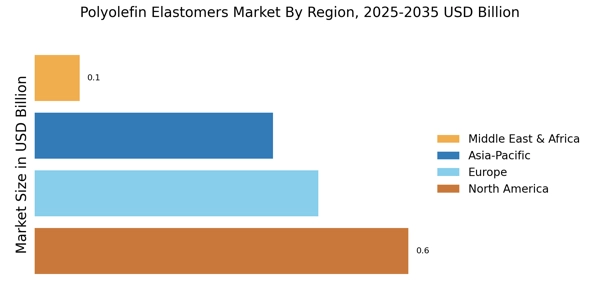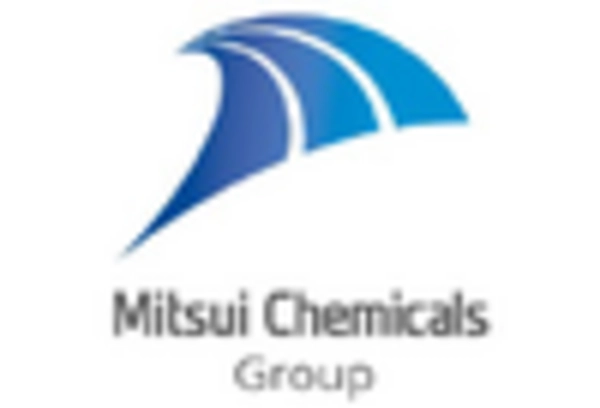Expansion in Consumer Goods
The consumer goods sector is witnessing a notable increase in the adoption of polyolefin elastomers, which is likely to bolster the Polyolefin Elastomers Market. These materials are favored for their versatility and ability to provide enhanced performance in products such as adhesives, sealants, and flexible packaging. The market for consumer goods utilizing polyolefin elastomers is anticipated to expand, driven by consumer preferences for high-quality, durable products. Recent estimates suggest that the market could grow by approximately 4% annually, as manufacturers increasingly incorporate these elastomers into their product lines to meet evolving consumer demands. This trend indicates a shift towards more innovative and sustainable consumer goods.
Increased Focus on Sustainability
The growing emphasis on sustainability is emerging as a pivotal driver for the Polyolefin Elastomers Market. As industries strive to reduce their environmental footprint, the demand for eco-friendly materials is on the rise. Polyolefin elastomers, known for their recyclability and lower carbon emissions during production, are becoming increasingly attractive to manufacturers. Recent studies indicate that the market for sustainable materials is expected to grow at a CAGR of 7%, reflecting a broader trend towards environmentally responsible practices. This shift not only aligns with regulatory pressures but also resonates with consumer preferences for sustainable products, thereby enhancing the market potential for polyolefin elastomers.
Diverse Applications in Healthcare
The healthcare sector is increasingly recognizing the benefits of polyolefin elastomers, which is likely to drive growth in the Polyolefin Elastomers Market. These materials are utilized in a variety of applications, including medical devices, packaging, and drug delivery systems, due to their biocompatibility and flexibility. The healthcare market for polyolefin elastomers is projected to expand, with an estimated growth rate of 5% annually, as the demand for innovative medical solutions continues to rise. This trend underscores the importance of polyolefin elastomers in enhancing the performance and safety of healthcare products, thereby solidifying their role in this critical industry.
Rising Demand in Automotive Sector
The automotive sector appears to be a significant driver for the Polyolefin Elastomers Market. As manufacturers increasingly seek lightweight materials to enhance fuel efficiency and reduce emissions, polyolefin elastomers are gaining traction due to their excellent flexibility and durability. The market for automotive applications is projected to grow at a compound annual growth rate (CAGR) of approximately 5% over the next few years. This growth is likely fueled by the rising production of electric vehicles, which require advanced materials for components such as seals, gaskets, and interior parts. Consequently, the demand for polyolefin elastomers is expected to rise, reflecting a broader trend towards sustainable and efficient automotive solutions.
Technological Innovations in Production
Technological advancements in the production processes of polyolefin elastomers are likely to serve as a catalyst for the Polyolefin Elastomers Market. Innovations such as advanced polymerization techniques and improved compounding methods are enhancing the efficiency and quality of elastomer production. These developments not only reduce production costs but also enable the creation of specialized grades of polyolefin elastomers tailored for specific applications. As a result, manufacturers are expected to invest in these technologies, potentially leading to a market growth rate of around 6% in the coming years. This focus on innovation suggests a competitive landscape where companies strive to differentiate their offerings through superior product performance.


















Leave a Comment